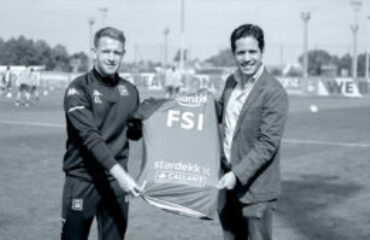THEORETICAL FRAMEWORK
Physiological and technical-tactical skills play crucial roles in soccer performance. In addition, acceleration, sprint velocity, and jump capacity are of major importance. Because of the extensive length of soccer matches, ~ 90% of the energy release is aerobic (Bangsbo, 1994). Aerobic capability relies on three critical components: maximal oxygen uptake (VO2MAX), anaerobic threshold, and work economy. Previous studies reported significant correlations between VO2MAX and distance covered during matches as well as a rank order correlation between VO2MAX and soccer league placement (Smaros, 1980; Apor, 1988). Similarly, the anaerobic threshold is highly dependent on VO2MAX, whereas work economy is defined as oxygen cost at submaximal exercise intensities. As running is usually not the favourite – or even the specific – activity of soccer players, it is necessary to seek effective training approaches to develop the aerobic endurance of soccer players in a proper and balanced manner.
STUDY OBJECTIVES
The purposes of this study were to create a dribbling track/playing session able to meet a pre-established criterion of effective aerobic interval training and examine whether heart rate is a valid measure of work intensity for these specific training sessions.
MAIN RESULTS
After examining the data collected from six first division soccer players who ran on a soccer-specific dribbling track and participated in small group play (five a side) and comparing these measurements with laboratory tests and corresponding field assessments, the authors observed that:
- Exercise intensity during small group play was 91.3% of maximal heart rate and/or 84.5% of VO2MAX.
- Exercise intensity during the dribbling track session was 93.5% of maximal heart rate and/or 91.7% of VO2MAX.
- No higher heart rate was detected during soccer training.
CONCLUSIONS
Soccer specific training sessions using ball dribbling drills or small group play may be considered as aerobic interval training sessions. Heart rate monitoring during soccer specific exercise (at least for aerobic-based training sessions) is a consistent indicator of training intensity.
FSI STATEMENTS
- One of the most relevant physiological parameters for quantifying the amount of work carried out during soccer matches is maximal oxygen uptake.
- This capability may be effectively trained at ~ 90-95% of maximal heart rate.
- Both strategies used here (a soccer-specific dribbling track and a small five a side group play) were shown to be effective to specifically develop the aerobic endurance of soccer players.
- Coaches and practitioners should prioritize the utilization of soccer-specific training situations to motivate soccer players and maximize their aerobic endurance.
Bangsbo J. Energy demands in competitive soccer. J Sports Sci 1994;12 (special no): S5–12.
Smaros G. Energy usage during a football match. In: Vecciet L, ed. Proceedings of the First International Congress on Sports Medicine Applied to Football. Rome: Guanillo, D, 1980:795–801.
Apor P. Successful formulae for fitness training. In: Reilly T, Lees A, Davids K, et al, eds. Science and football. London: E & F N Spon, 1988:95–107.





